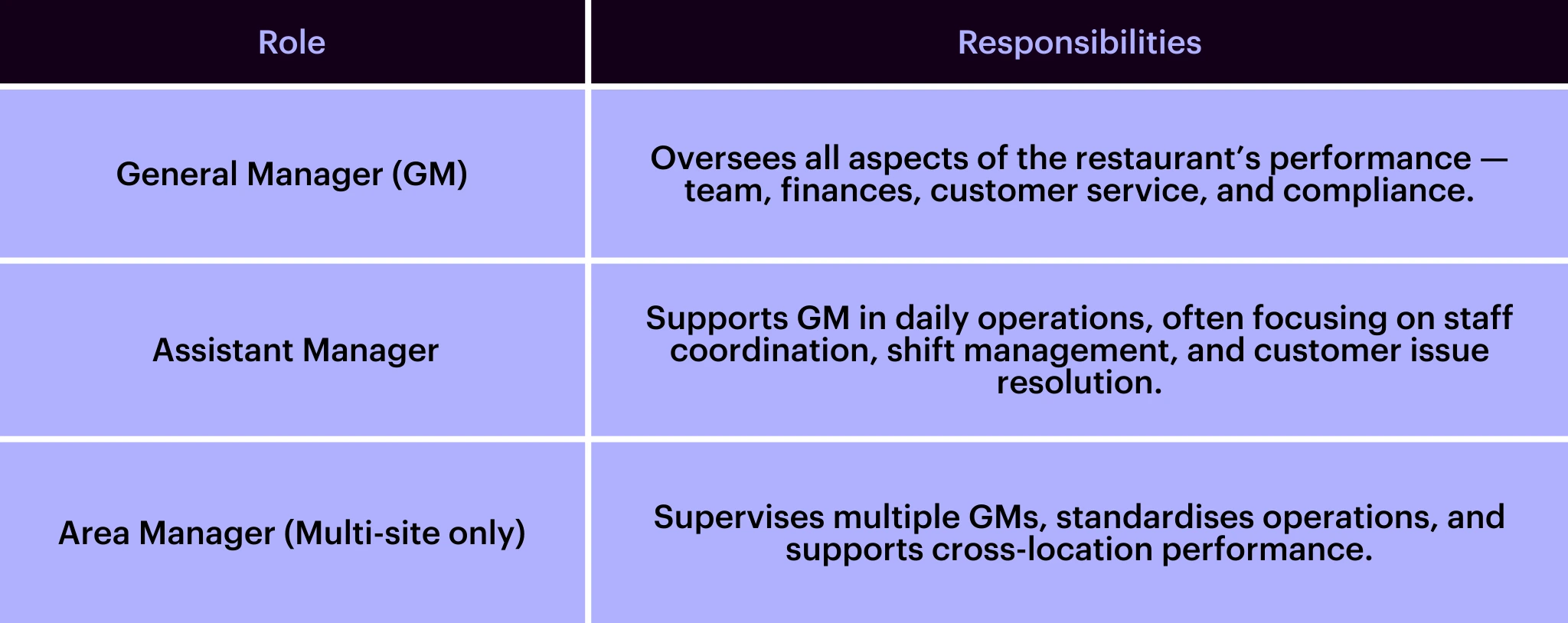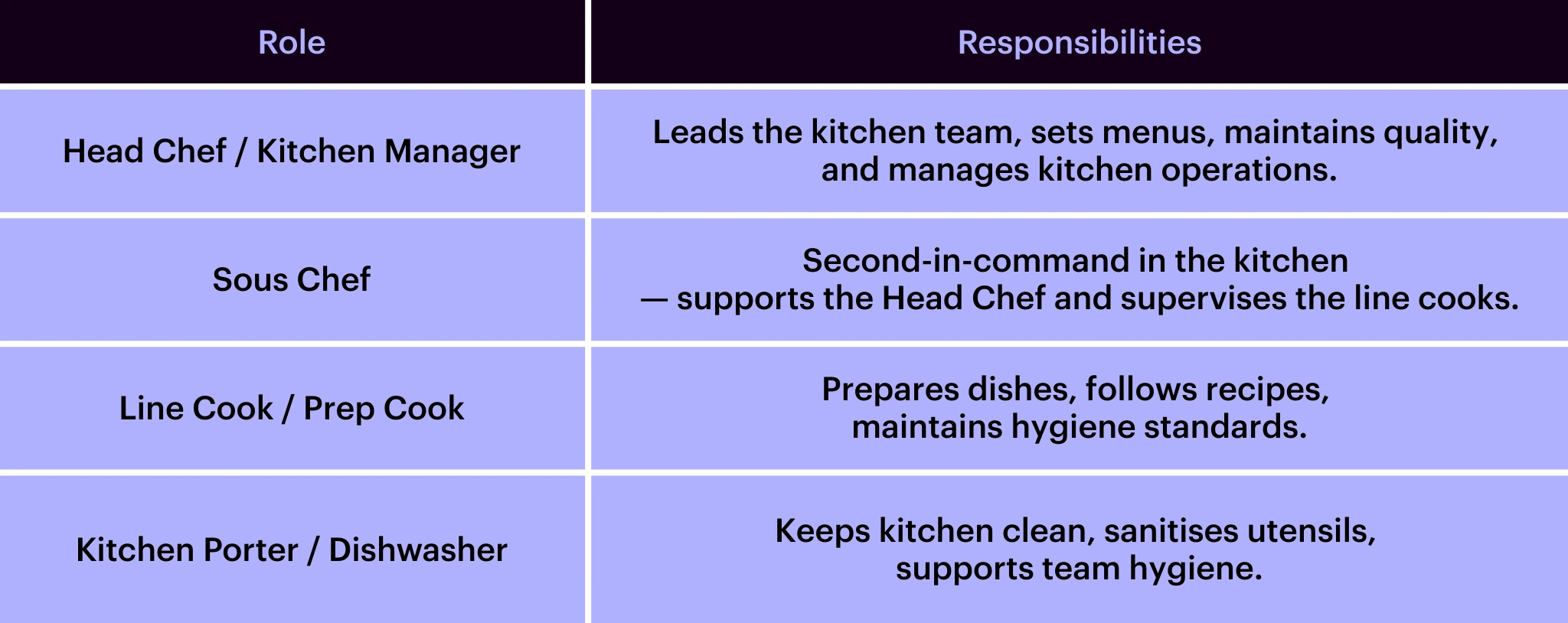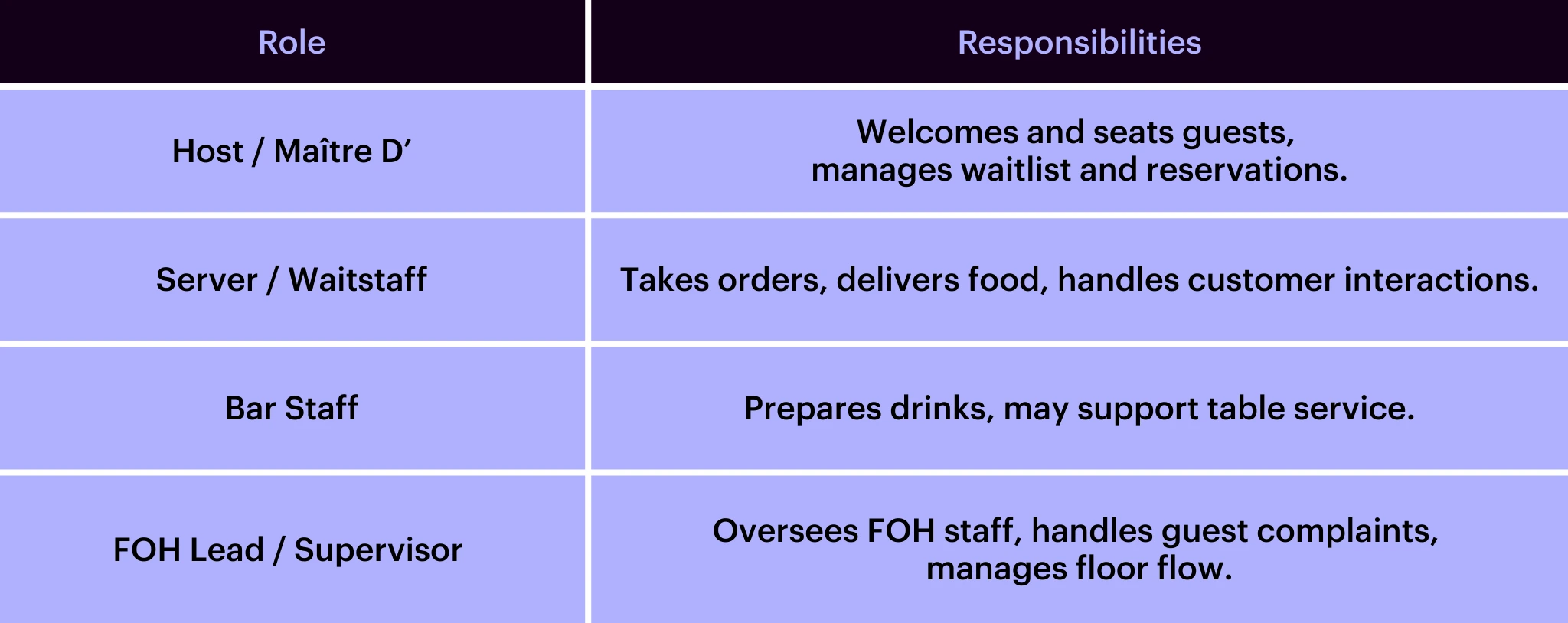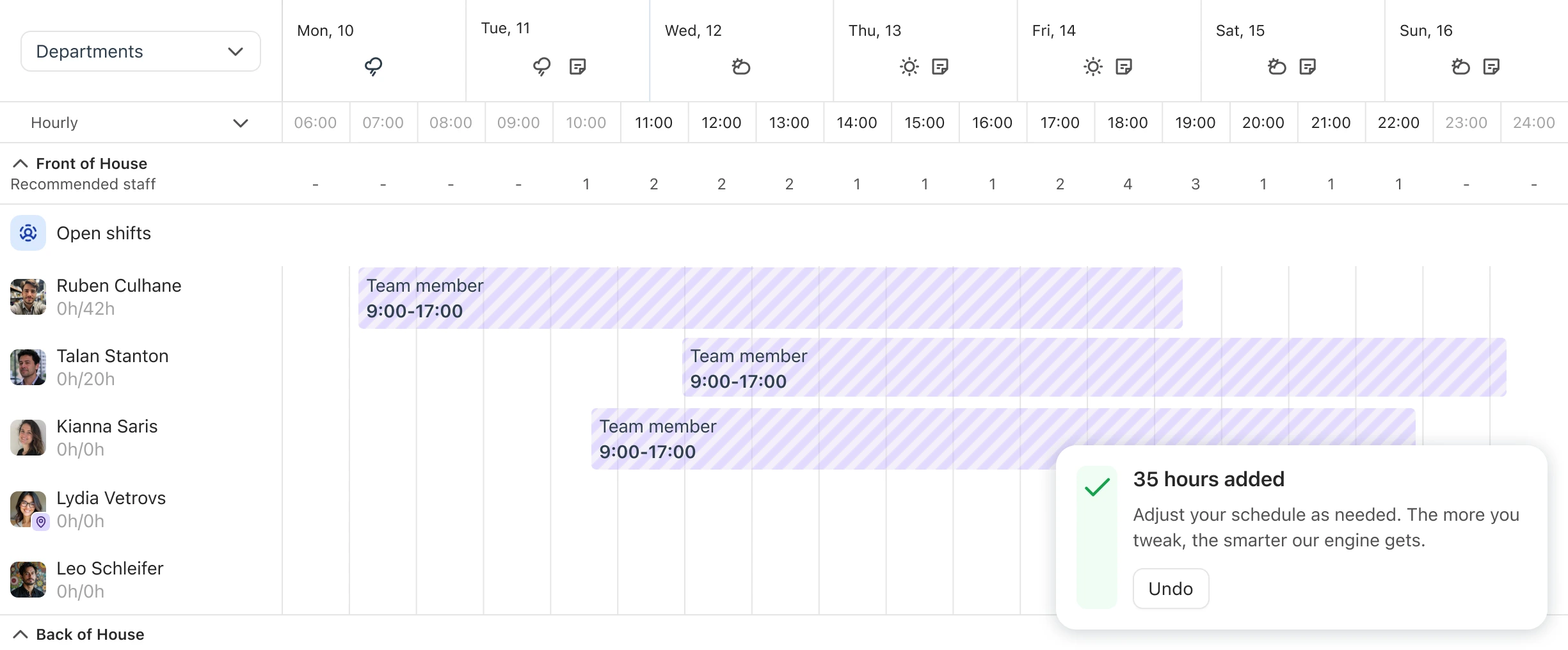The right team structure for restaurant success
A well-structured restaurant team is the backbone of smooth service, consistent quality, and long-term growth. Without a clear hierarchy and operational structure, even the most talented teams can fall into confusion, duplication of effort, and guest dissatisfaction.
But restaurant team structure isn’t one-size-fits-all.
Quick service, full-service, and multi-site restaurants all require different levels of support and management oversight — and the ability to adapt that structure as you grow is what separates thriving brands from those stuck in survival mode.
In this guide, we’ll walk through the core roles in a restaurant, explain why structure matters more than ever in 2025, and show how smart tools like Nory can unify teams, streamline communication, and give operators the visibility they need to scale confidently.
Why restaurant structure matters
A clear team structure isn’t just an HR diagram — it’s a strategic foundation for restaurant success. Here’s why it matters:
- Prevents confusion and duplication: When roles and responsibilities are clearly defined, tasks don’t fall through the cracks or get repeated unnecessarily.
- Improves communication: A strong hierarchy ensures messages flow both top-down and bottom-up efficiently.
- Creates accountability: Managers know what they own, and staff know who to turn to for support.
- Enables consistent guest experience: Clear ownership of service, prep, and quality ensures guests enjoy the same standard — every time.
- Supports onboarding and training: New hires get up to speed faster when responsibilities and reporting lines are clearly defined.
- Enables performance tracking: With a structured team, managers can review outcomes role by role and use data to drive improvement.
The core roles in a restaurant team
Every restaurant structure is slightly different, but most share a core framework of roles grouped into Front of House (FOH), Back of House (BOH), and Management. Here’s how they typically break down:
Management Team

Back of House (BOH)

Front of House (FOH)

Specialist Roles (Larger Teams / Multi-site)
- Inventory / Procurement Manager
- HR / Training Coordinator
- Finance / Payroll Officer
- Marketing or Guest Experience Manager
Each of these roles can also be supported and tracked via Nory, which allows operators to create role-specific dashboards and permissions across locations.
Adapting your team structure to restaurant type
Quick Service Restaurants (QSRs)
- Flat structures are common, with fewer layers.
- Staff often cross-train to handle multiple roles.
- Key focus: efficiency, speed, and high turnover management.
Casual or Full-Service Restaurants
- Require clearer FOH/BOH role separation.
- Managers take more active roles in guest experience and daily team leadership.
- Loyalty and consistency are prioritised.
Multi-Site Restaurants or Groups
- Require multi-tiered management (e.g. Area Managers).
- Standardisation across sites is crucial for consistency.
- Data visibility across locations becomes critical — this is where tech like Nory’s Workforce Management shines.
How tech strengthens team structure
Technology is no longer just a back-office tool — it’s a core part of the restaurant team structure. Here's how Nory brings cohesion, visibility, and control:
Real-Time Team Communication
Centralise shift handovers, announcements, and checklists so nothing gets missed.
Role-Based Dashboards
Give team leads visibility over the metrics that matter to their responsibilities — from food waste to customer satisfaction.
Multi-Site Oversight
Monitor staffing, performance, and communication across all locations from one system — perfect for area managers or ops directors.
Structured Accountability
Use Nory to define who is responsible for what — and track follow-through with integrated performance data.
Case in point: Restaurants using Nory to manage multi-site teams report fewer shift gaps, more consistent service, and clearer leadership development pipelines.

Promoting leadership and cross-team alignment
A good structure breaks down silos — especially between FOH and BOH. Here’s how to reinforce alignment across teams:
- Hold daily shift briefings so FOH and BOH are aligned on specials, covers, and expectations.
- Use shared performance metrics (e.g. table time, order accuracy) to build joint accountability.
- Schedule check-ins with team leads to catch issues early and keep culture healthy.
Staff development: structure builds growth
Clear structure doesn’t just improve operations — it drives staff development and retention.
- Define transparent career paths (e.g. Server → Supervisor → Assistant Manager)
- Track skill progress and staff training status using tech
- Celebrate internal promotions — it keeps morale high and turnover low
Conclusion - your org chart is a growth tool
A well-built restaurant team structure is more than just roles and titles — it’s your strategy for growth, culture, and consistency.
By aligning the right people with the right responsibilities, and supporting them with smart systems like Nory, you create the conditions for every service to run smoother, every site to scale faster, and every team member to thrive.
Next steps
- Audit your current structure — where are the gaps in ownership or communication?
- Build a simple role map for each location with defined responsibilities
- Book a walkthrough with Nory to see how structure, scheduling, and staff communication can all be unified under one platform.
FAQs
What is the best team structure for a restaurant?
The best team structure depends on your service model, size, and growth goals. At a minimum, you’ll need clearly defined roles across front of house (FOH), back of house (BOH), and management. Larger restaurants may also require specialist roles like HR, inventory, or marketing. The key is ensuring everyone knows their responsibilities and who they report to — and using tools like Nory to support that structure.
Why is team structure important in restaurants?
A clear structure helps prevent confusion, improves communication, and keeps service consistent. It also supports smoother onboarding, improves staff accountability, and allows managers to track performance role by role. With the right structure in place, your team works more efficiently — and your guests feel the difference.
How can restaurant management software help with team structure?
Smart workforce tools like Nory streamline everything from scheduling and communication to performance tracking. You can assign responsibilities, create role-specific dashboards, and ensure multi-site teams stay aligned. With Nory, structure becomes more than just an org chart — it’s a system for clarity, visibility, and growth.

.webp)
.webp)

